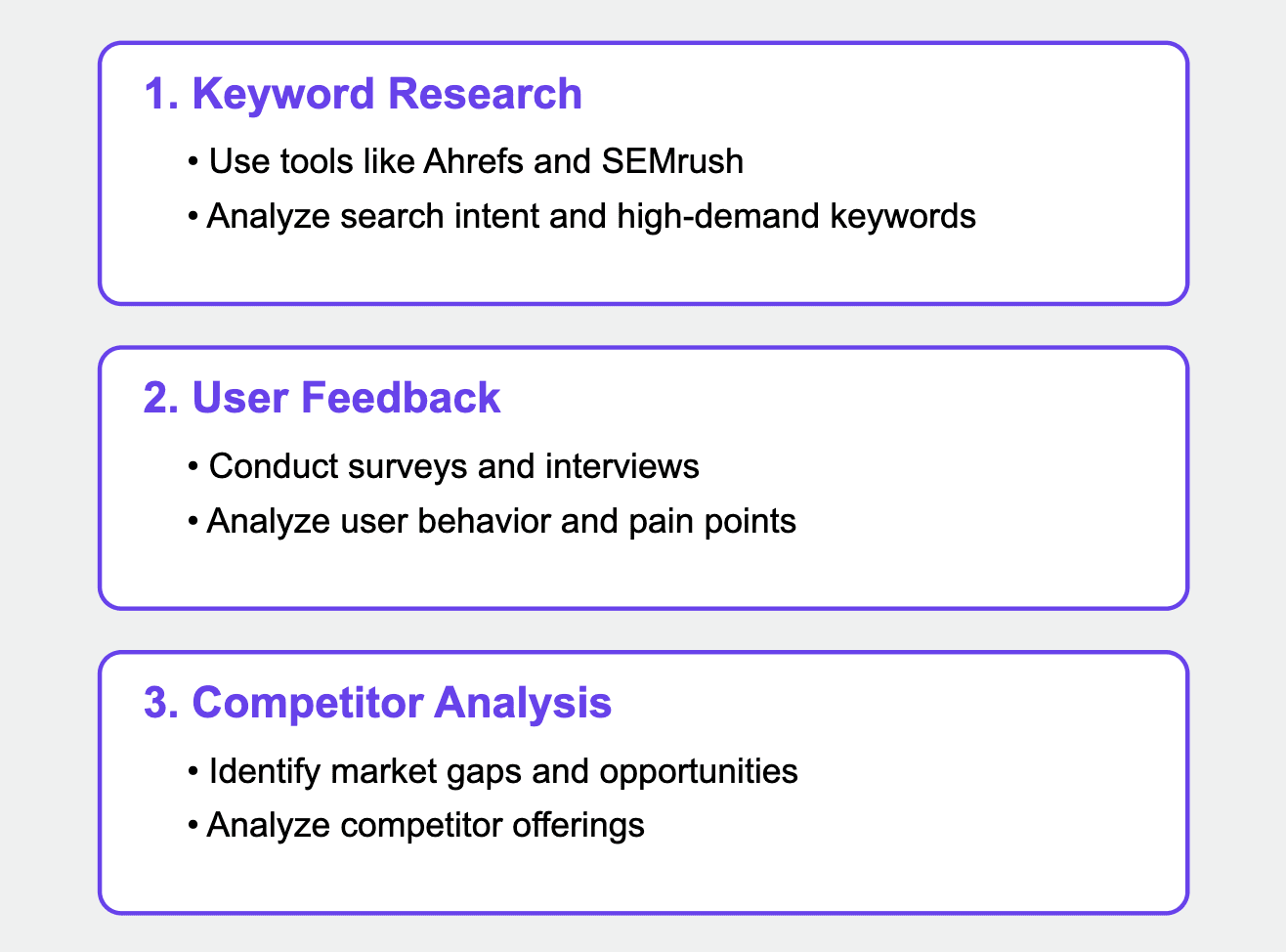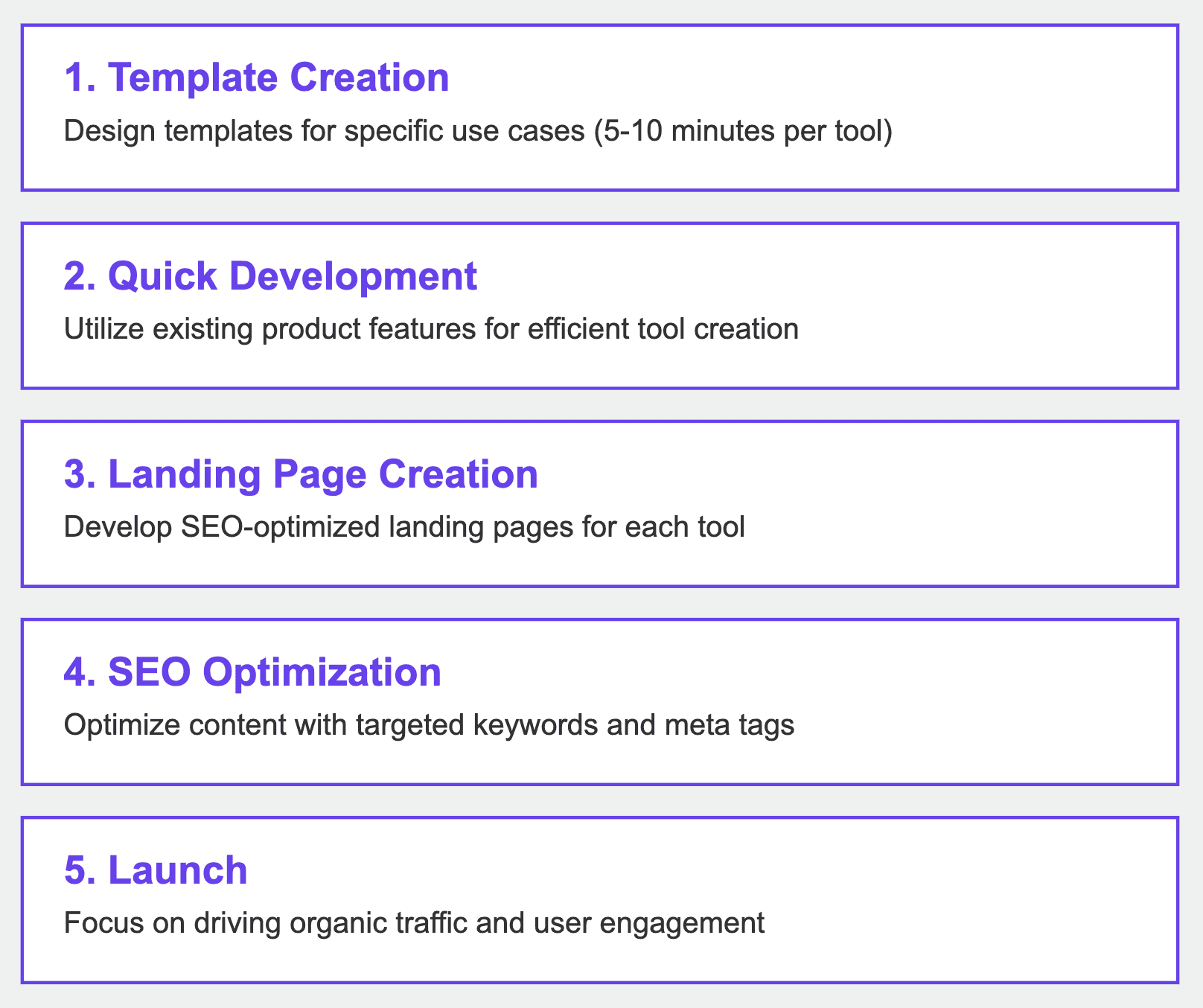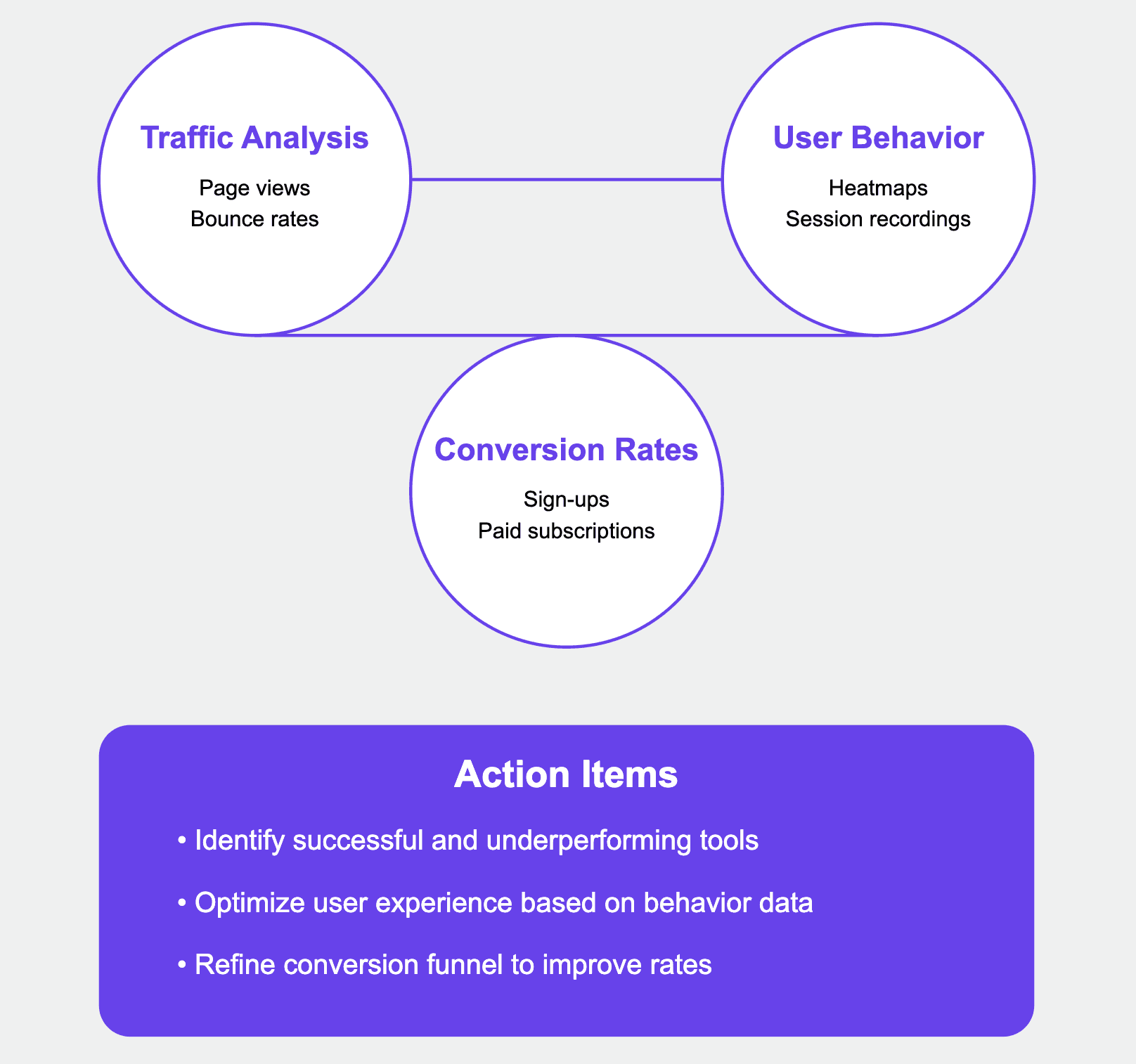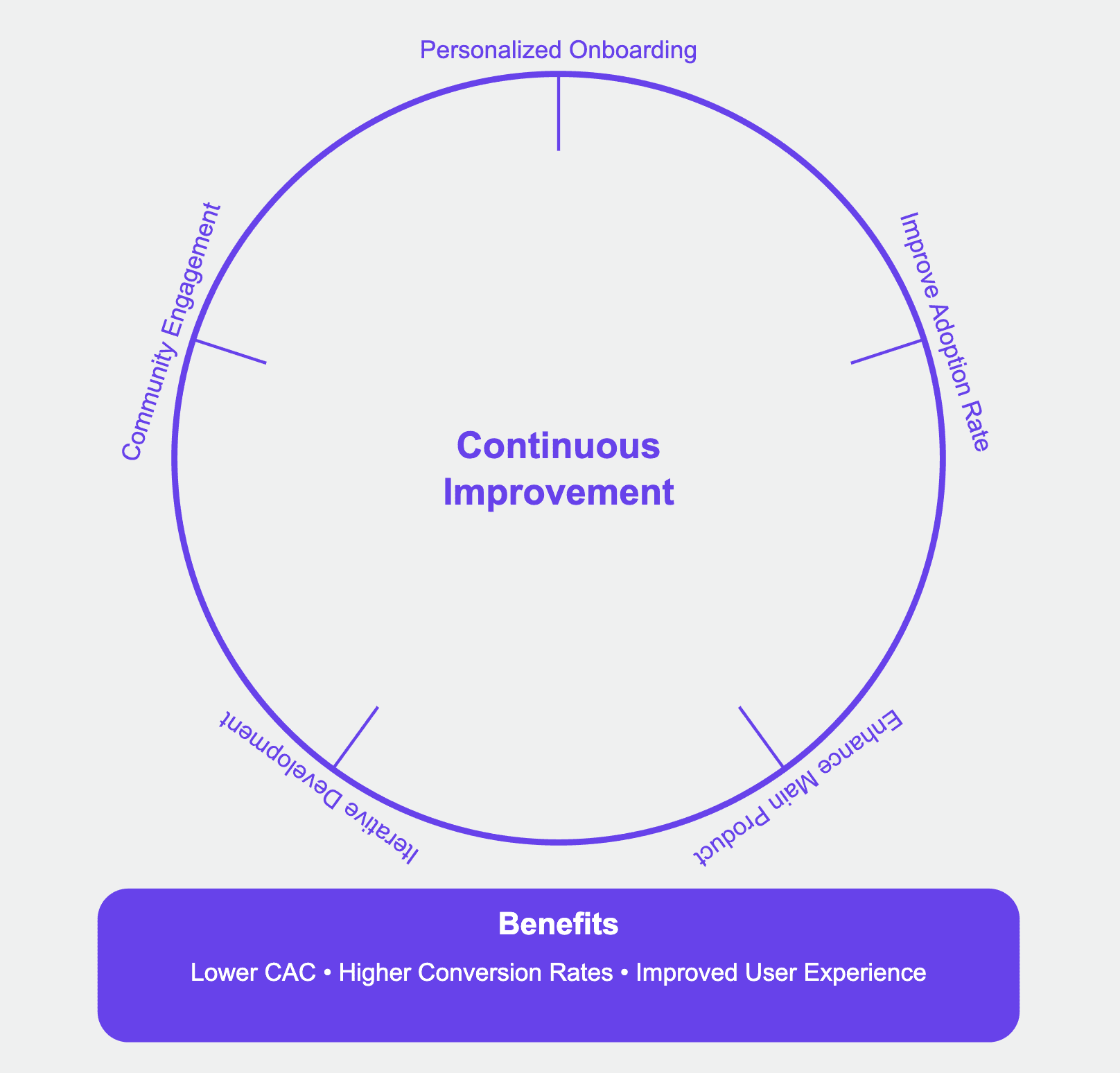
How to Implement Free Tools for SaaS Growth and SEO: Guide

par
Aleksa Mitrovic
23 oct. 2024
Identifiez et convertissez vos utilisateurs les plus importants
Créer un compte
Leveraging free tools to drive growth and improve SEO is a strategy that can yield significant results. TextCortex, a generative AI company, has successfully implemented this approach by offering a suite of free tools that attract users and convert them into paying customers.
This comprehensive guide will walk you through the steps to implement free tools effectively, drawing from the insights shared by Baris, the growth and product marketing lead at TextCortex.

Step 1: Identify Potential Free Tools

Keyword Research
The first step in identifying potential free tools is conducting thorough keyword research. Tools like Ahrefs and SEMrush are invaluable for this purpose. These platforms provide insights into search intent and help you understand what users are looking for. By targeting high-demand keywords, you can create tools that address specific user needs and attract organic traffic.
User Feedback
Engaging with your users is crucial for understanding their pain points and identifying viable use cases. Collect feedback through surveys, interviews, and user behavior analysis. This data will help you tailor your free tools to meet the specific needs of your audience.
Competitor Analysis
Analyzing what your competitors are offering can provide valuable insights into gaps in the market. Identify areas where your competitors are falling short and develop free tools that fill these gaps. This can give you a competitive edge and attract users who are looking for solutions that your competitors do not provide.
Step 2: Develop Free Tools

Template Creation
Once you have identified potential free tools, the next step is to create templates or saved prompts that address specific use cases. These templates should be designed to provide immediate value to users and demonstrate the capabilities of your main product.
Quick Development
The key to successfully implementing free tools is to develop them quickly and efficiently. Utilize existing product features to create free tools in a short amount of time. Aim for a development time of 5-10 minutes per tool to ensure that you can scale your efforts effectively.
Landing Page
Develop a landing page for each free tool, ensuring it is optimized for SEO with relevant keywords and clear communication. The landing page should provide a detailed description of the tool, its benefits, and how it can be used. Include calls-to-action (CTAs) that encourage users to sign up for your main product.
Step 3: Launch and Promote Free Tools
SEO Optimization
Ensure each free tool is optimized for search engines with targeted keywords and relevant content. This will help you attract organic traffic and improve your search engine rankings. Use on-page SEO techniques such as meta tags, header tags, and internal linking to maximize the visibility of your free tools.
Organic Traffic
Focus on driving organic traffic through SEO. Avoid paid promotions initially to keep costs low. Organic traffic is a sustainable and cost-effective way to attract users to your free tools and ultimately convert them into paying customers.
User Engagement
Encourage users to share their templates and use cases, which can serve as additional free tool ideas. Create a community around your free tools by engaging with users on social media, forums, and other online platforms. This will help you build a loyal user base and drive continuous engagement.
Step 4: Monitor and Analyze Usage Data

Traffic Analysis
Monitor the traffic generated by each free tool to identify successful and underperforming tools. Use analytics tools to track key metrics such as page views, bounce rates, and conversion rates. This data will help you understand which tools are driving the most engagement and which ones need improvement.
User Behavior
Analyze how users interact with the free tools to understand their needs and preferences. Use heatmaps, session recordings, and user feedback to gain insights into user behavior. This information will help you optimize your free tools and improve the overall user experience.
Conversion Rates
Track sign-up and conversion rates to evaluate the effectiveness of each free tool in driving user engagement and paid subscriptions. Use A/B testing to experiment with different CTAs, landing page designs, and onboarding flows to maximize conversion rates.
Step 5: Optimize Onboarding and Product Experience
Personalized Onboarding
Use data from free tool usage to tailor the onboarding experience for new users. Create personalized onboarding flows that address the specific needs and roles of your users. This will help you improve the adoption rate and provide a seamless transition from free tools to your main product.
Adoption Rate
Improve the adoption rate by providing a personalized experience that aligns with users' specific needs and roles. Use data from free tool usage to identify high-value use cases and tailor your onboarding flows accordingly. This will help you ensure that users see the immediate value of your product and are more likely to become paying customers.
Product Improvement
Use insights from free tool usage to enhance the main product, ensuring it meets the validated use cases. Continuously gather user feedback and iterate on your product to provide a superior user experience. This will help you retain users and drive long-term growth.
Step 6: Continuous Improvement and Scaling

Iterative Development
Continuously develop and launch new free tools based on user feedback and market trends. Use agile development methodologies to iterate quickly and respond to changing user needs. This will help you stay ahead of the competition and attract a steady stream of new users.
Community Engagement
Encourage users to create and share their own templates, fostering a community of thought leaders. Create a marketplace where users can discover and share templates, driving organic traffic and engagement. This will help you build a vibrant community around your product and drive continuous growth.
SEO Maintenance
Regularly update and optimize free tool landing pages to maintain and improve search engine rankings. Use tools like Google Search Console to monitor your search performance and identify opportunities for improvement. This will help you ensure that your free tools continue to attract organic traffic and drive growth.
Step 7: Evaluate Impact on Customer Acquisition Costs (CAC)
Cost Analysis
Compare the cost of organic traffic from free tools with other acquisition channels like paid ads. Organic traffic is generally cheaper and more sustainable in the long run. Use tools like Google Analytics to track the cost per acquisition (CPA) for different channels and evaluate the overall impact on your customer acquisition costs.
Long-Term Investment
Recognize that organic growth is a long-term investment with lower costs and higher returns over time. While paid ads can provide immediate results, organic traffic is more sustainable and cost-effective in the long run. Focus on building a strong SEO foundation to drive continuous growth and reduce customer acquisition costs.
Conversion Metrics
Track the percentage of free tool users who convert to paid customers to evaluate the overall impact on CAC. Use tools like Mixpanel or Amplitude to track user behavior and conversion rates. This data will help you understand the effectiveness of your free tools in driving user engagement and paid subscriptions.
Step 8: Leverage Unexpected Benefits
Enterprise Insights
Use free tools to validate use cases and provide tangible examples to enterprises, aiding in closing deals. Many enterprises are interested in AI but struggle to understand its practical applications. By providing free tools that demonstrate specific use cases, you can help enterprises see the value of your product and increase the likelihood of closing deals.
User-Generated Content
Encourage users to create and share templates, which can serve as additional free tool ideas and drive organic traffic. Create a marketplace where users can discover and share templates, fostering a community of thought leaders. This will help you build a vibrant community around your product and drive continuous growth.
Conclusion
Implementing free tools to drive growth and improve SEO is a powerful strategy that can yield significant results. By following the steps outlined in this guide, you can effectively identify, develop, and promote free tools that attract users and convert them into paying customers.
Continuously monitor and analyze usage data to optimize your onboarding and product experience, and leverage unexpected benefits to drive long-term growth and reduce customer acquisition costs. With a strategic approach and a focus on user needs, you can successfully implement free tools to drive growth and improve SEO for your business.




